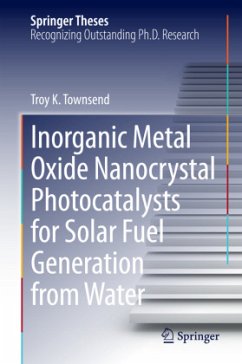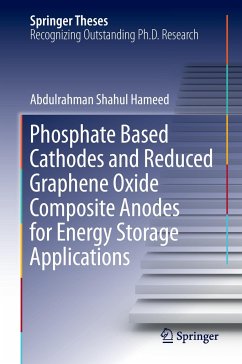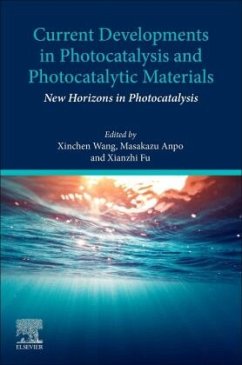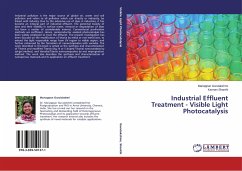
Investigation into High Efficiency Visible Light Photocatalysts for Water Reduction and Oxidation
Versandkostenfrei!
Versandfertig in 6-10 Tagen
76,99 €
inkl. MwSt.

PAYBACK Punkte
38 °P sammeln!
This thesis describes novel strategies for the rational design of several cutting-edge high-efficiency photocatalysts, for applications such as water photooxidation, reduction, and overall splitting using a Z-Scheme system. As such, it focuses on efficient strategies for reducing energy loss by controlling charge transfer and separation, including novel faceted forms of silver phosphate for water photooxidation at record high rates, surface-basic highly polymerised graphitic carbon nitride for extremely efficient hydrogen production, and the first example of overall water splitting using a gra...
This thesis describes novel strategies for the rational design of several cutting-edge high-efficiency photocatalysts, for applications such as water photooxidation, reduction, and overall splitting using a Z-Scheme system. As such, it focuses on efficient strategies for reducing energy loss by controlling charge transfer and separation, including novel faceted forms of silver phosphate for water photooxidation at record high rates, surface-basic highly polymerised graphitic carbon nitride for extremely efficient hydrogen production, and the first example of overall water splitting using a graphitic carbon nitride-based Z-Scheme system.
Photocatalytic water splitting using solar irradiation can potentially offer a zero-carbon renewable energy source, yielding hydrogen and oxygen as clean products. These two 'solar' products can be used directly in fuel cells or combustion to provide clean electricity or other energy. Alternatively they can be utilised as separate entities for feedstock-based reactions, and are considered to be the two cornerstones of hydrogenation and oxidation reactions, including the production of methanol as a safe/portable fuel, or conventional catalytic reactions such as Fischer-Tropsch synthesis and ethylene oxide production.
The main driving force behind the investigation is the fact that no photocatalyst system has yet reported combined high efficiency, high stability, and cost effectiveness; though cheap and stable, most suffer from low efficiency.
Photocatalytic water splitting using solar irradiation can potentially offer a zero-carbon renewable energy source, yielding hydrogen and oxygen as clean products. These two 'solar' products can be used directly in fuel cells or combustion to provide clean electricity or other energy. Alternatively they can be utilised as separate entities for feedstock-based reactions, and are considered to be the two cornerstones of hydrogenation and oxidation reactions, including the production of methanol as a safe/portable fuel, or conventional catalytic reactions such as Fischer-Tropsch synthesis and ethylene oxide production.
The main driving force behind the investigation is the fact that no photocatalyst system has yet reported combined high efficiency, high stability, and cost effectiveness; though cheap and stable, most suffer from low efficiency.












